Nexus 7 (2013) - Mini Review
by Brian Klug on July 27, 2013 12:54 AM EST- Posted in
- Tablets
- Snapdragon
- Qualcomm
- Android
- Mobile
- APQ8064
- Nexus 7
- Android 4.3
Last year the Nexus 7 debuted with a Tegra 3 SoC, which for reminder consisted of a 4+1 architecture of ARM Cortex A9 CPUs, with the 4 A9s built on 40nm G, and the +1 “shadow core” A9 built on 40nm LP (TSMC’s 40 LPG process), accompanied by ULP GeForce GPU with 12 cores running at a max GPU clock of 416 MHz. The exact SoC was NVIDIA’s Tegra 3 T30L, which could run one A9 at up to 1.3 GHz and all A9s at up to 1.2 GHz.
Rather than the relatively logical upgrade path of going to NVIDIA’s Tegra 4 SoC (I’ve heard all manner of speculation about what happened there), the new Nexus 7 switches to Qualcomm’s APQ8064–1AA, a version with 4 Krait 300 CPU cores (yes, Krait 300, not 200) running at up to 1.5 GHz and Adreno 320 graphics. Rather than use a PoP and LPDDR2, this specific APQ8064 variant goes to PCDDR3L–1600 MHz instead, including 4, 4Gb discrete 1.35V SK-hynix DRAM devices off to the side (more on the opposite side of the PCB) adding up to 2 GB of RAM. Qualcomm's Snapdragon S4 Pro and Snapdragon 600 branding gets confused here, although Qualcomm is calling the APQ8064 inside the Nexus 7 (2013) S4 Pro, it's more like an underclocked or lower binned Snapdragon 600.
At this point APQ8064 is probably the most well understood SoC in recent memory (so much so that I’m pining for devices to include something different just from an academic perspective) so I’ll spare the very verbal discussion about its performance.
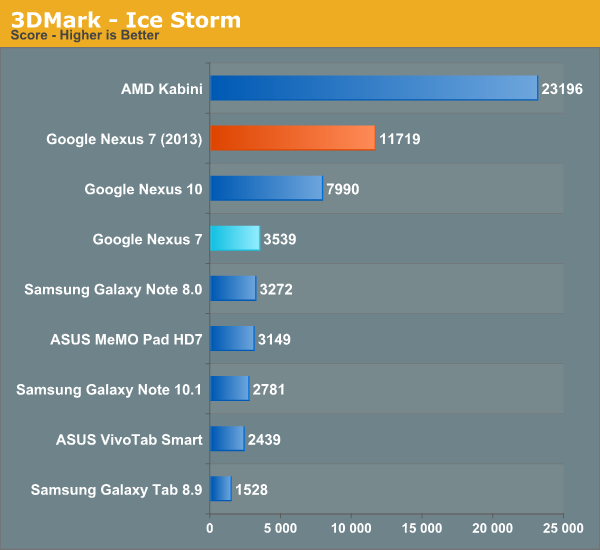



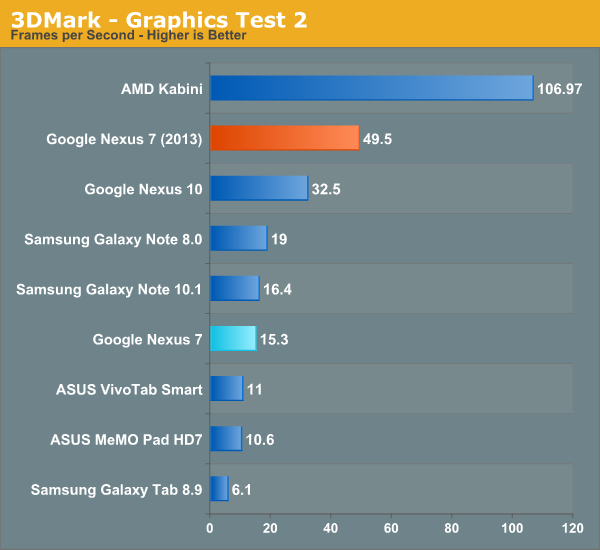
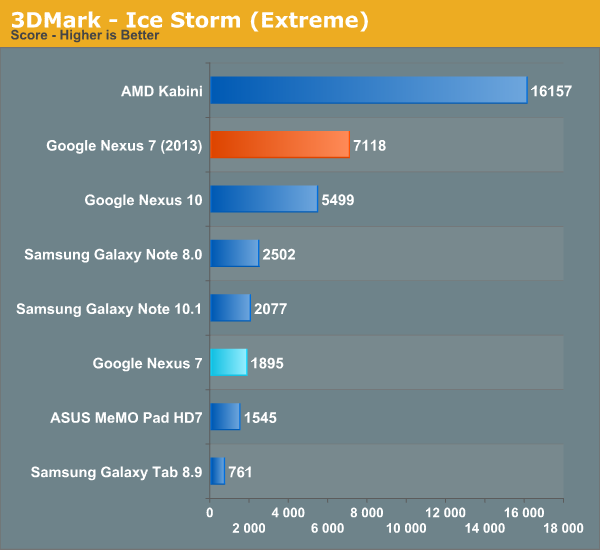

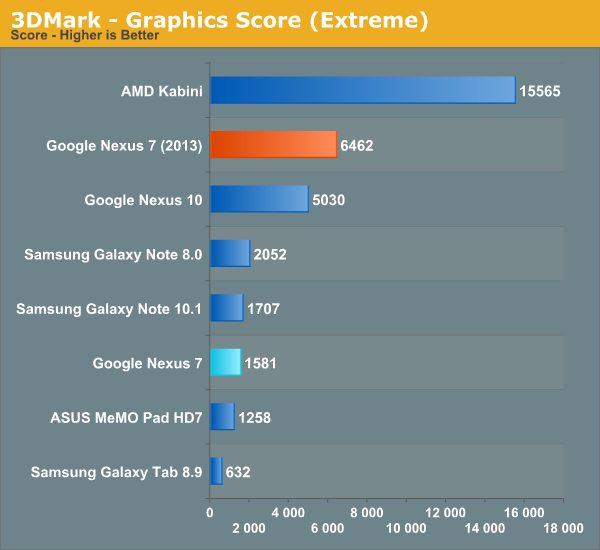

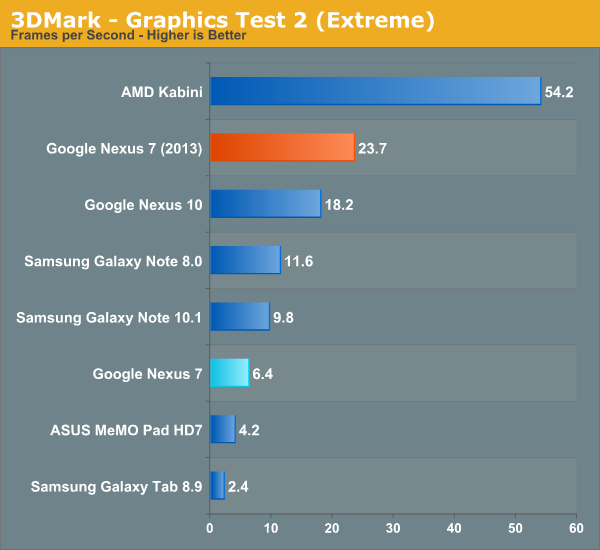


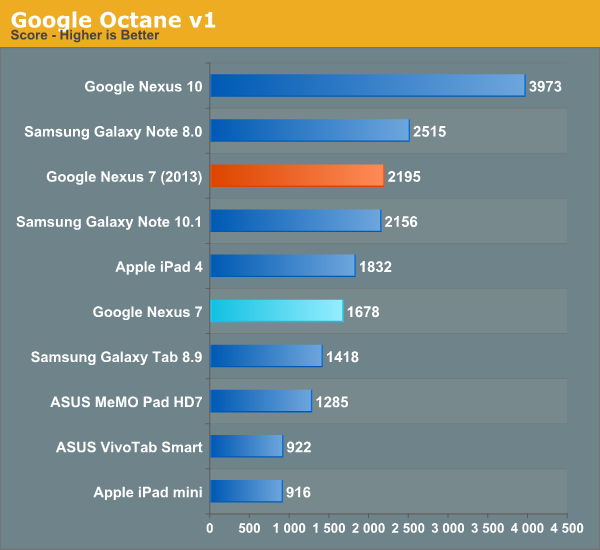
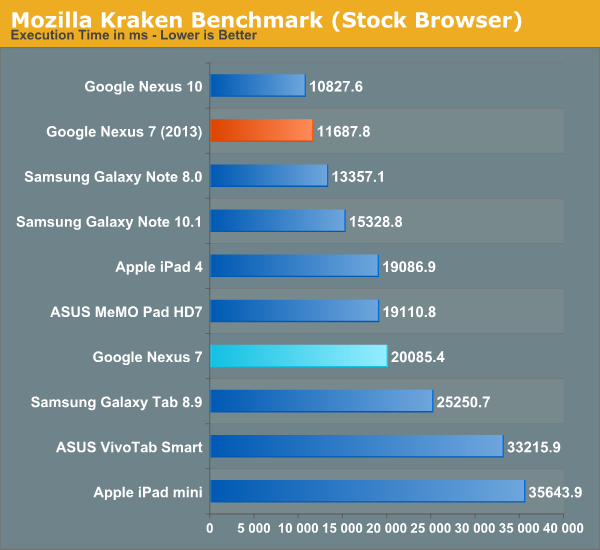
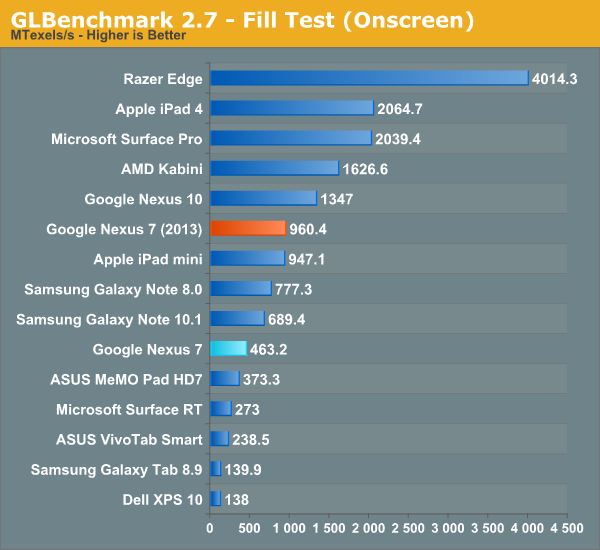
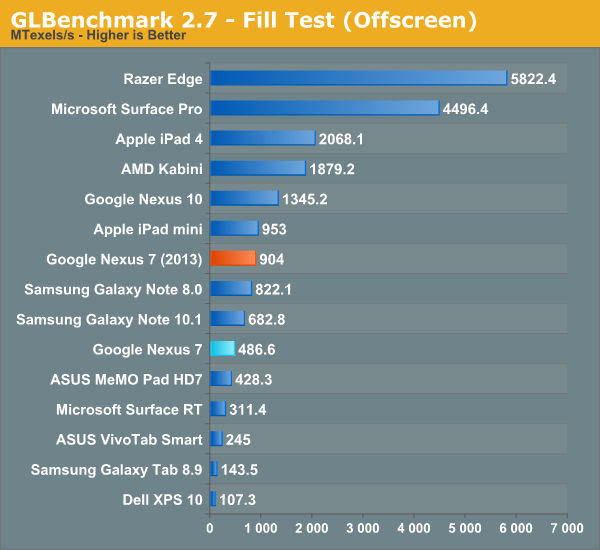
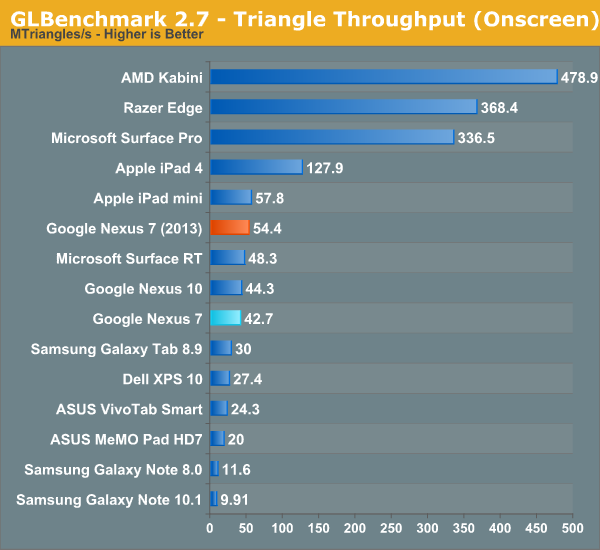
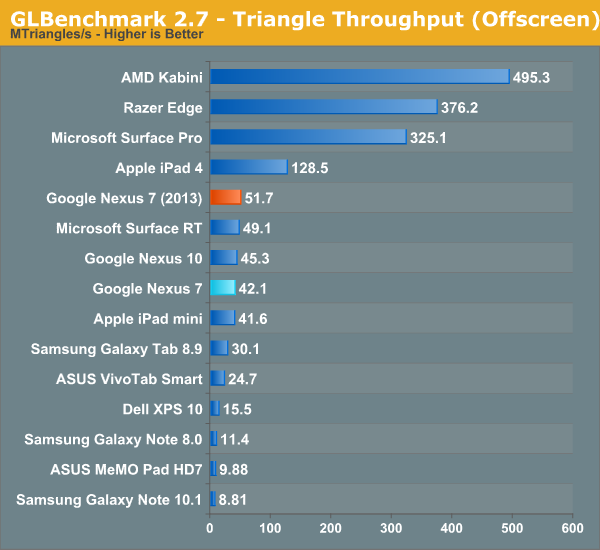
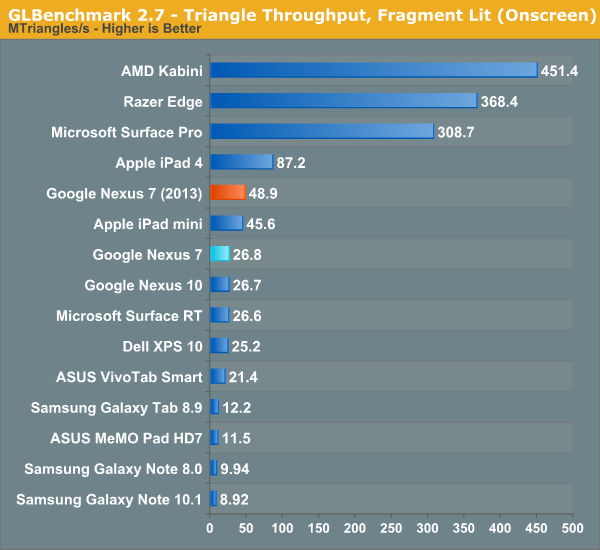
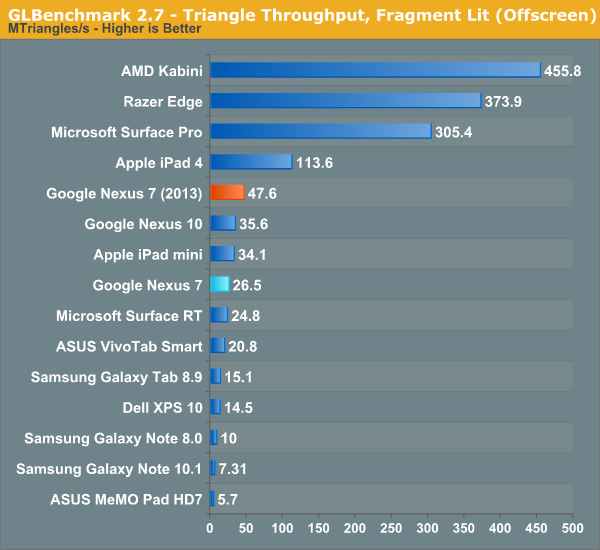
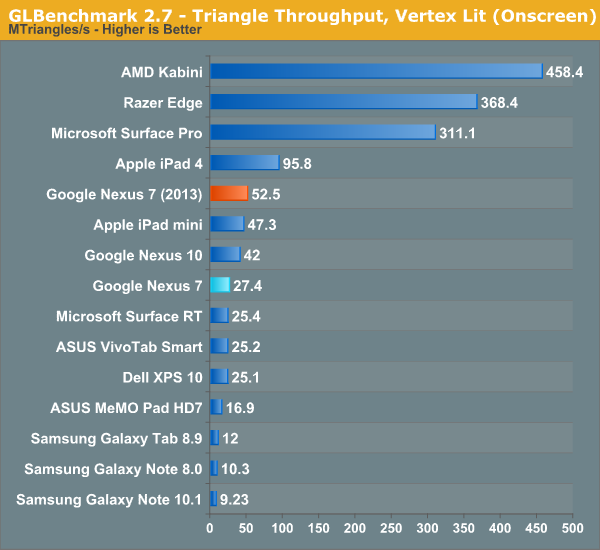
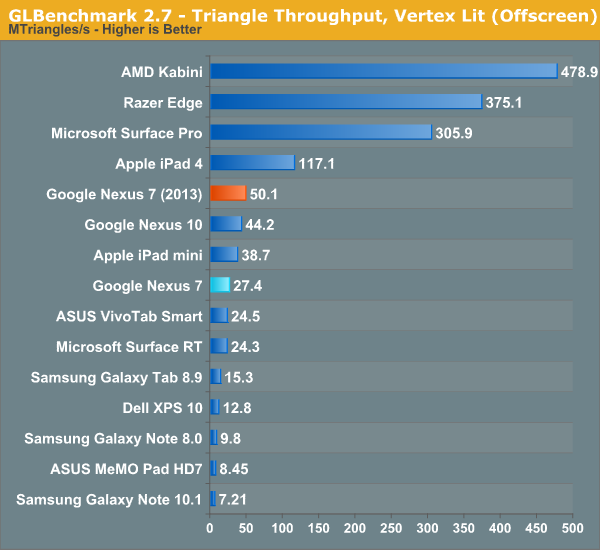

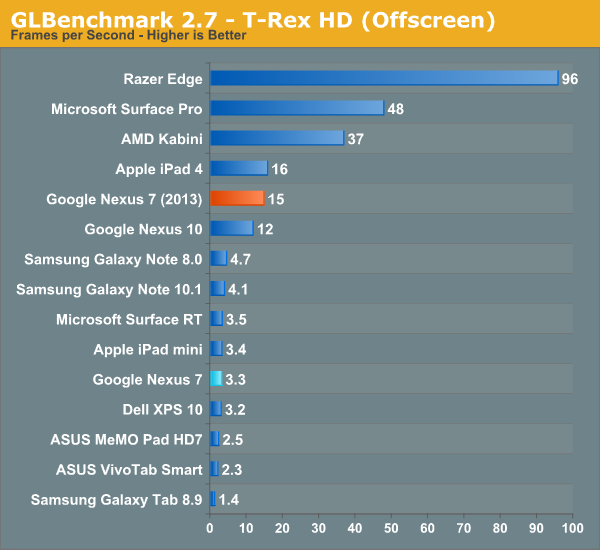
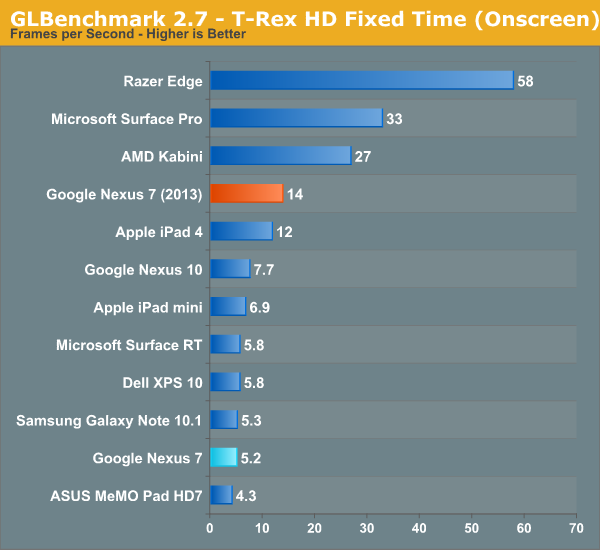
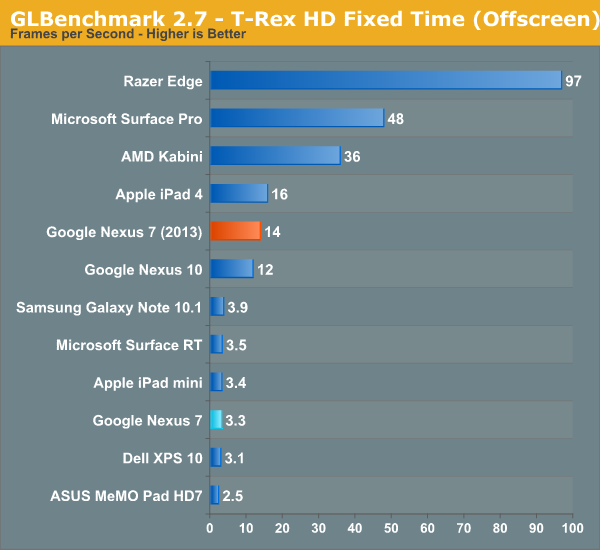
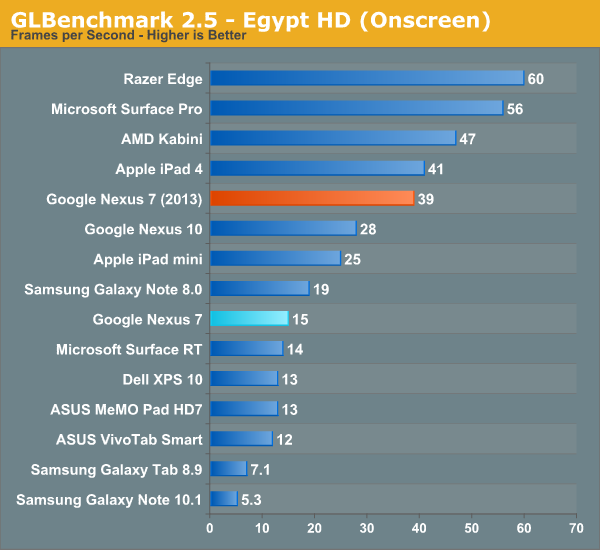
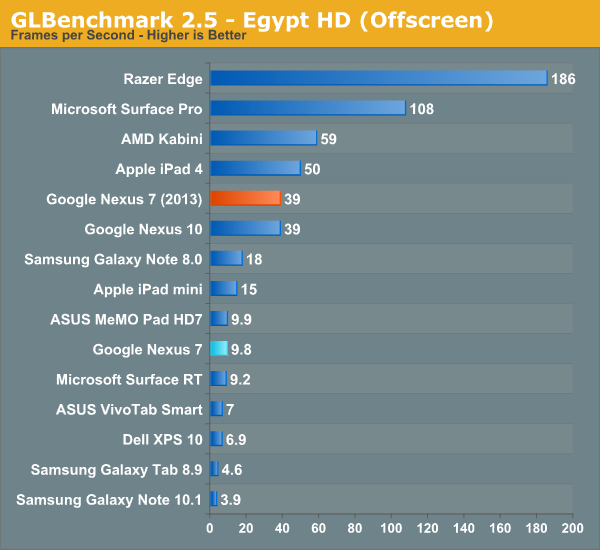
Suffice it to say, moving from 1.2–1.3 GHz Tegra 3 to 1.5 GHz APQ8064 represents a big jump forwards in performance. Google claimed 1.8x improvement on CPU performance, and 4x improvement on GPU, which gets validated pretty much consistently through the benchmarks. I never felt like Tegra 3 was a slouch by any means (performance was more I/O bound on the OG Nexus 7, which we’ll talk about in a moment), but the new Nexus 7 has ample performance for the considerable increase in screen resolution.
Dat eMMC
It wasn’t any secret with the original Nexus 7 that much of the real world performance was gated by storage I/O throughput – we wrote about it after all – and storage performance was a common complaint while multitasking on a few other previous and similar era ASUS tablets. Most of the time performance was acceptable, and for $200 you can’t complain too much about things, the issue was that further on in the life of the tablet performance began degrading somewhat notably, leading to complaints.
Obviously the first thing I did on the Nexus 7 (2013) was run Androbench with the same 100 MB settings to test and see what out of box I/O performance looks like. Things are much better with the new Nexus 7 than they were with the previous one, so at a high level all is good.
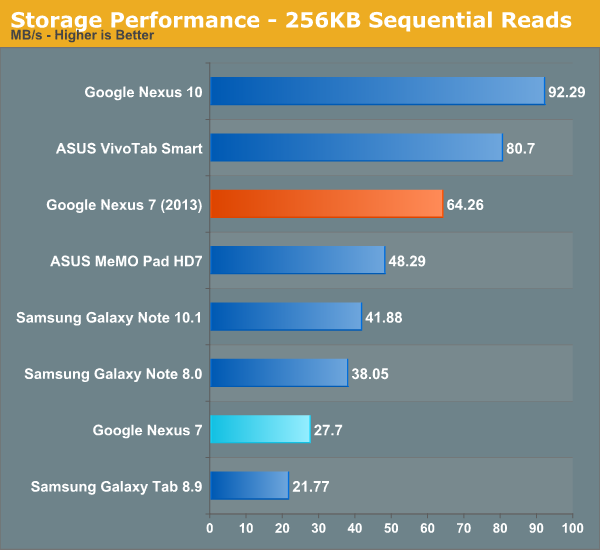
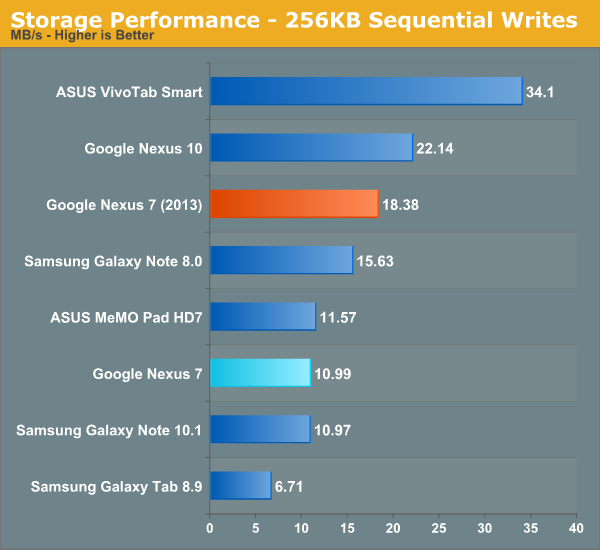
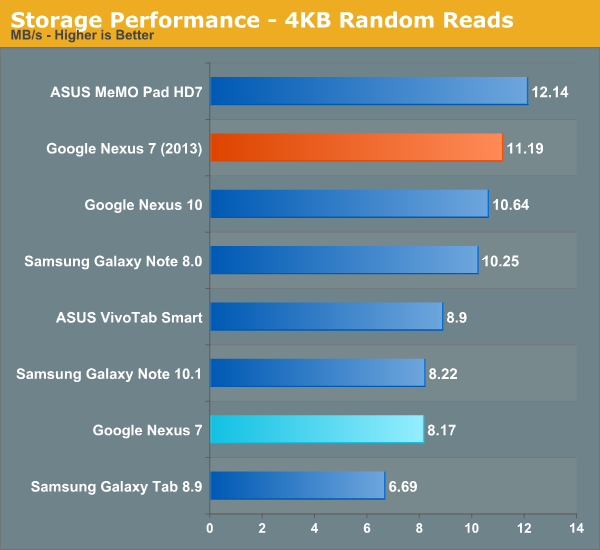

The story actually is a bit more involved however. One of the big problems was that the slowness which occurred with the prior Nexus 7 took device aging to appear – it was great for the first few months, but after you started loading it things tailed off. The new Nexus 7 (2013) with Android 4.3 includes support for fstrim, essentially idle garbage collection, which TRIMs the eMMC when a few conditions are met – the device is idle, screen off, and battery above roughly 70-percent. I’m told that TRIM support has been part of the eMMC standard since around version 4.2, it was just a matter of enabling it in software. The result is that the new Nexus 7 shouldn’t have these aging affects at all. Better yet, fstrim support has also been added to the old Nexus 7 with as of the Android 4.3 update, so if you’ve got a Nexus 7 that feels slow, I/O performance should get better after fstrim runs in the background. I'm checking on whether the other Nexus devices have also had TRIM support added. I would consider the slow storage aging problem fixed as of now, and Google took the eMMC and storage I/O performance issues with the previous Nexus 7 to heart for this version.


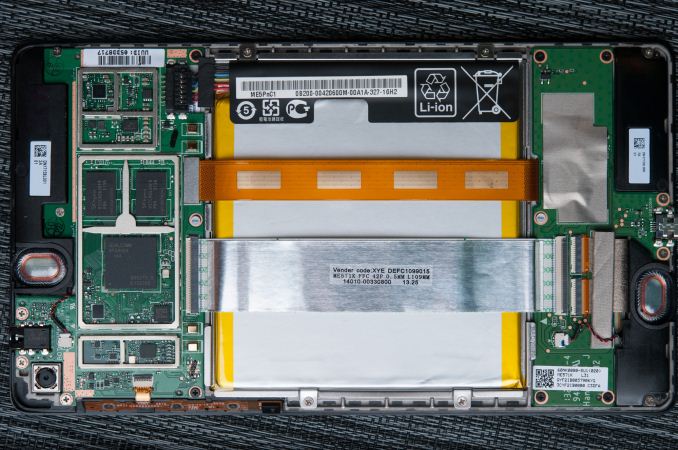
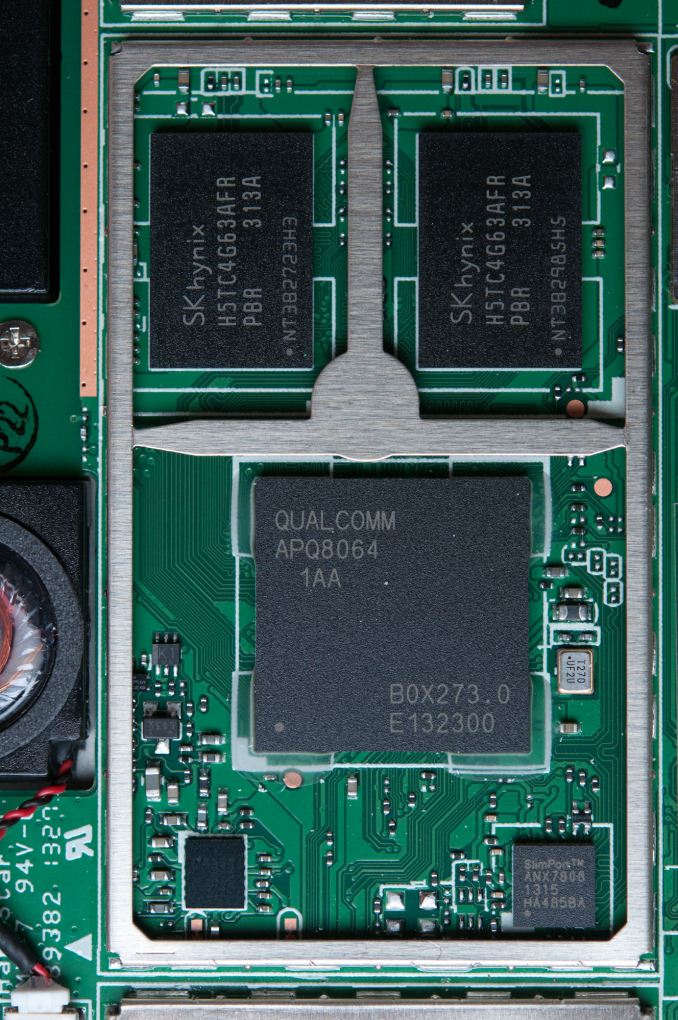














252 Comments
View All Comments
thesavvymage - Saturday, July 27, 2013 - link
Any word on if this supports usb otg out of the box?rhx123 - Saturday, July 27, 2013 - link
Yes I too would love to know if even USB OTG Keyboard/Mouse works.Bob Todd - Saturday, July 27, 2013 - link
I'll third this request. I assume it is, but Brian can you confirm if USB OTG is working properly? I've actually ended up preferring USB OTG to a micro sd card for my most common use case for oodles of storage (obviously having both would be best). It's more convenient for me to quickly slap a bunch of HD movies onto a fast 64GB USB 3.0 flash drive before a long flight than it is to screw around with painfully slow microSDXC cards. I get 60MB/s on the flash drive writes vs. < 15MB/s on a 64GB microSDXC card (that's actually performing above spec). The write speeds are just way too slow on the micro cards to make transferring copious amounts of data an enjoyable task. The flash drives are cheaper as well. And if I need more space I can just use a cheap 1TB 2.5" external (Timur has kernels for powered USB OTG for the original Nexus 7 so battery life isn't an issue).Brian Klug - Saturday, July 27, 2013 - link
I always forget to test, I will do so.I should mention that I brought USB-OTG up with some Googlers, they said this is not a priority at present, but it's on their long laundry list of things. I'm not sure what that means, but it backs up my impressions that again, it just isn't a focus and has inconsistent support.
-Brian
Bob Todd - Sunday, July 28, 2013 - link
Awesome, thanks Brian! And I'll just add to the chorus (and something I've mentioned before) that I'm really happy with the "mini" reviews. I know the big ones take a lot of time to put together, but the smaller reviews here are still 10x more insightful than you'll get from any gadget blog. So much so in fact that these are useful for real purchasing decisions. I originally thought I'd upgrade my old N7 to this, then decided I'd just wait for a Silvermont (or possibly Temash) Windows 8.1 tablet, and after reading this I'm probably back to upgrading if USB OTG works. The inclusion of Krait 300 cores is a nice bonus even if we're only talking about a ~15% IPC improvement.Impulses - Sunday, July 28, 2013 - link
I'd like to know as well, it isn't crucial for me but it'd make it a whole lot more pleasant to use... 60MB/s? I've seen USB 3.0 flash drives that can easily do triple and quadruple that for sequential transfers. USB OTG for me satisfies every possible usage case I'd have for a card slot, and more. I'm hoping it works with that importer app at least, like the original Nexus... It should, unless there's some glaring hardware omission like with the Nexus 4.Bob Todd - Monday, July 29, 2013 - link
Yup, there are definitely much faster flash drives. But the ones I'm talking about in the ~60MB/s range are cheap (regularly on sale for ~$0.57/GB). You can get over 2X the performance, but it's over 2X the cost. There's obviously a big form factor advantage for the flash drive, but once you start talking about ~$90 for a very fast 64GB flash drive I'd personally rather just buy a 128GB SSD/enclosure that is much faster still. I actually bought a 256GB Agility 4 to use as a "big ass fast flash drive". I still think it was a good idea for my use cases, too bad that drive was absolutely unreliable trash and it needs its third RMA.aylak - Saturday, July 27, 2013 - link
Thank you for the review. I'm not sure it was mentioned and I missed it but does it have haptic feedback?_jsw_ - Saturday, July 27, 2013 - link
No, it does not. No vibrating motor at all.fatso485 - Saturday, July 27, 2013 - link
I fail to see why this is a mini review. Its better and a lot more detailed than the other "big tech blogs" reviewsKeep doing what you are doing anandtech